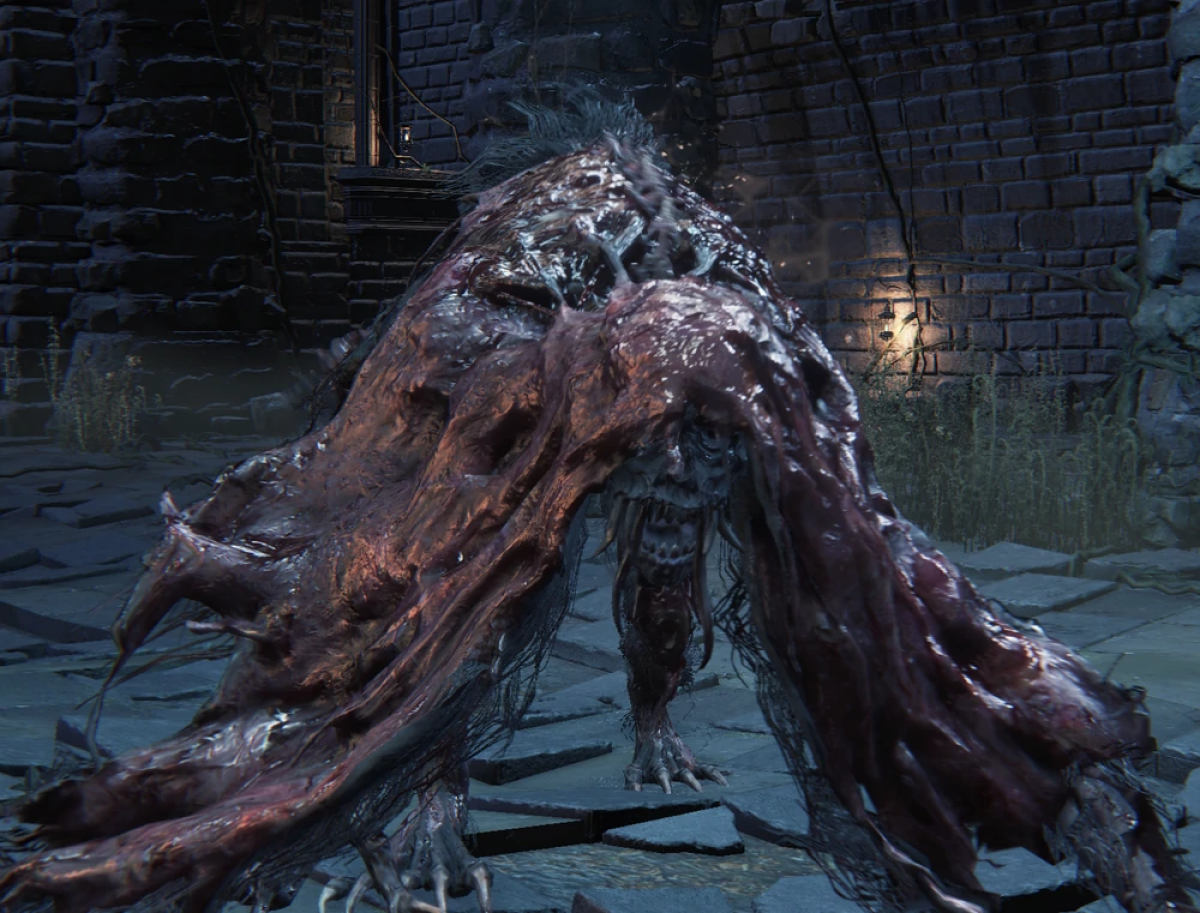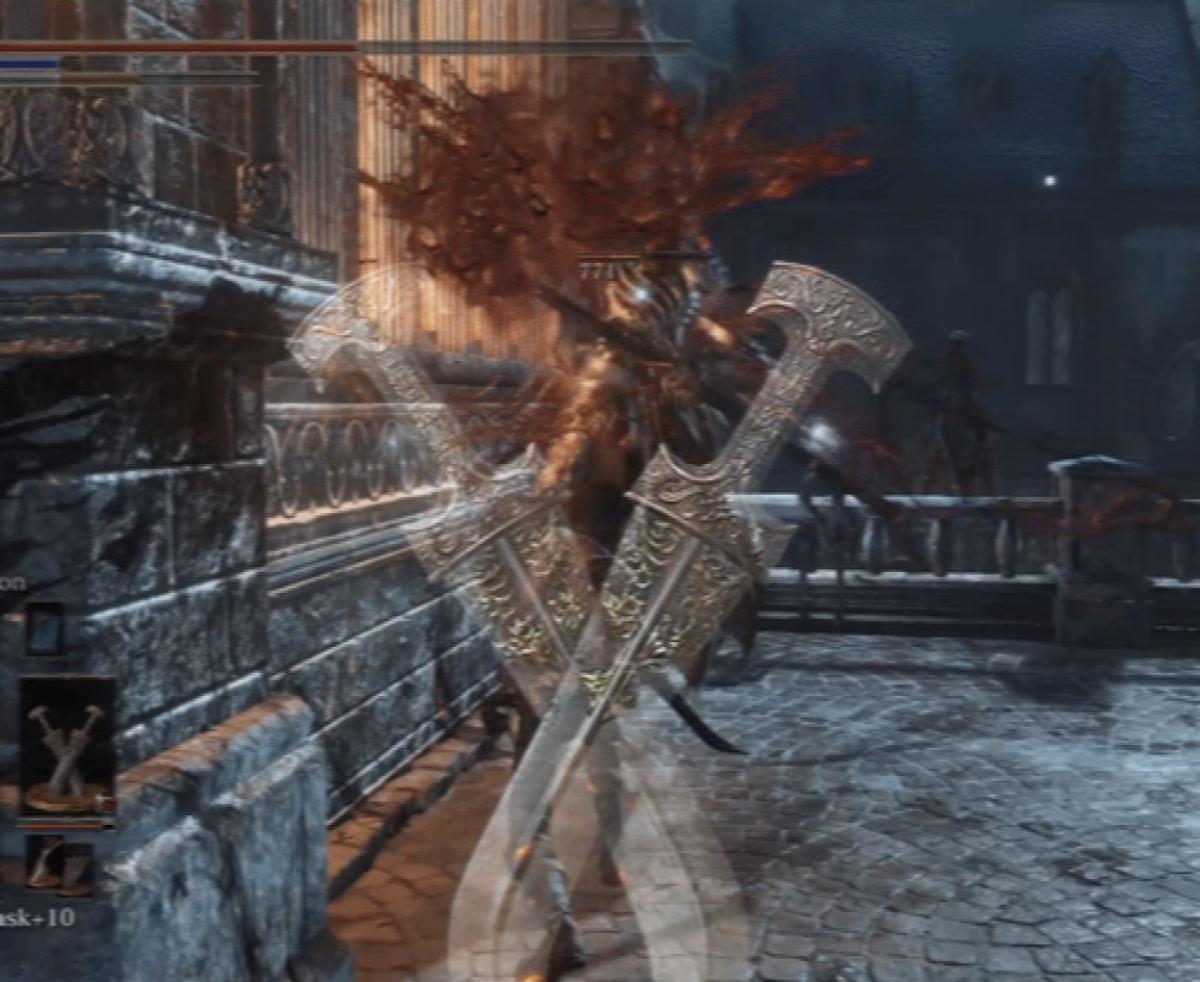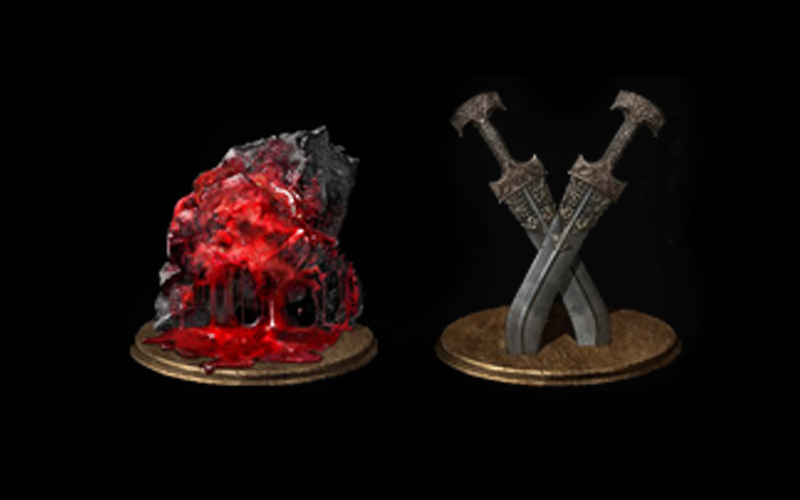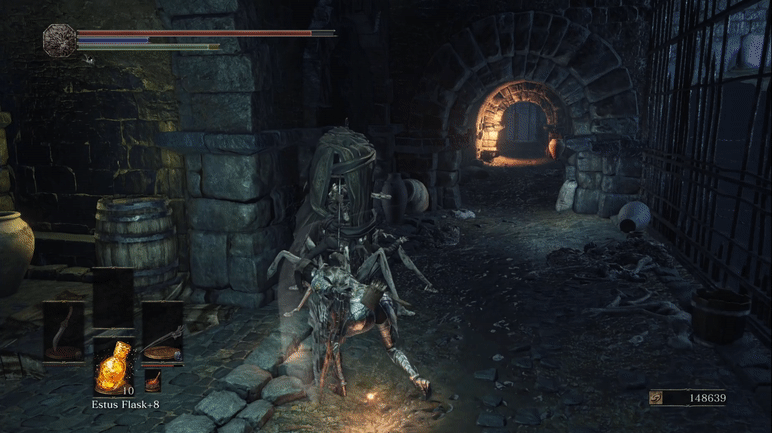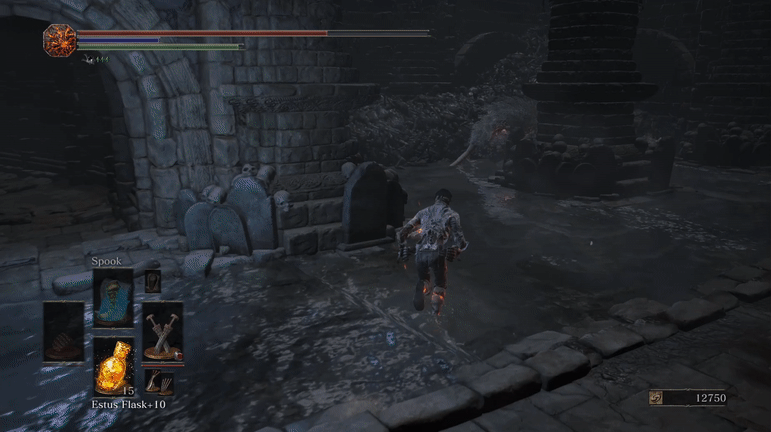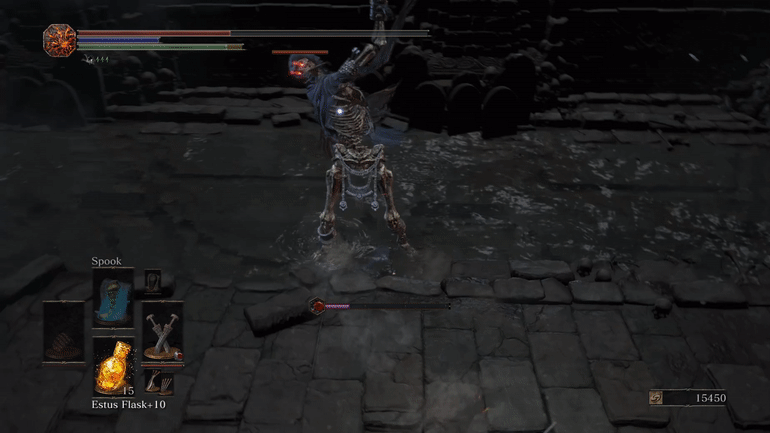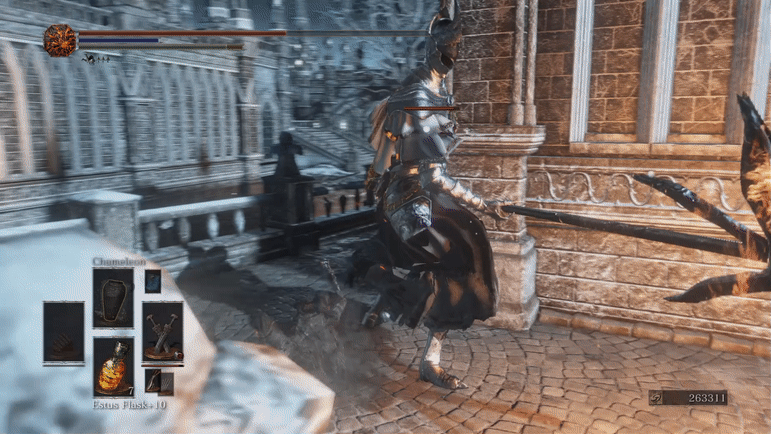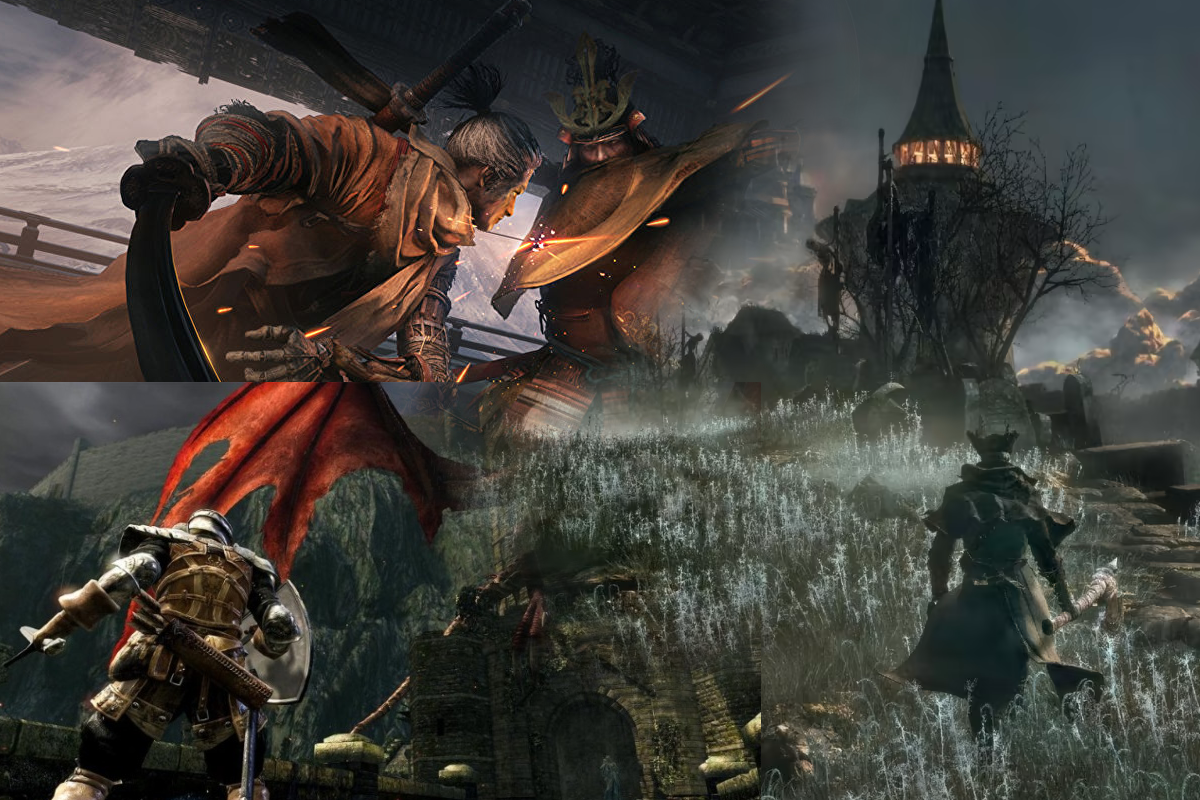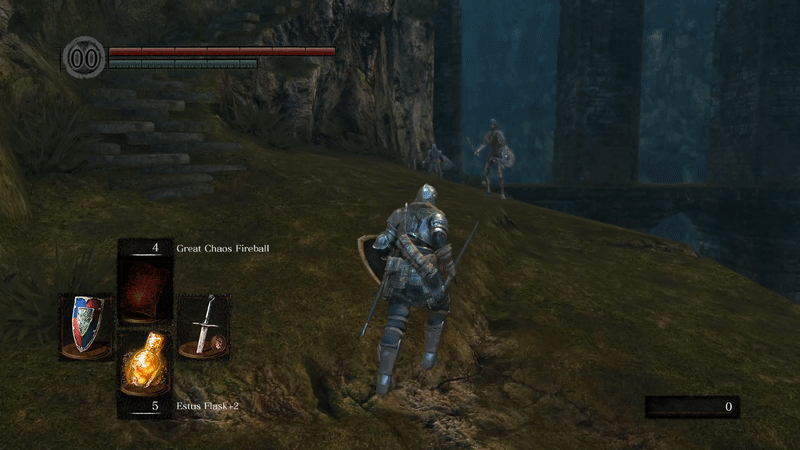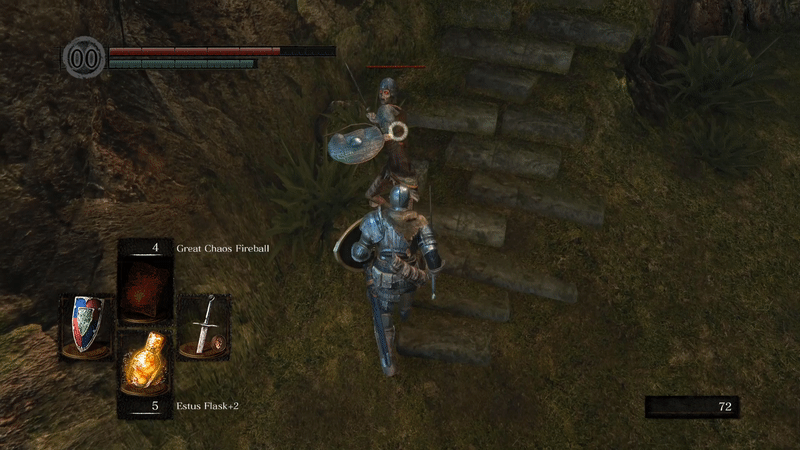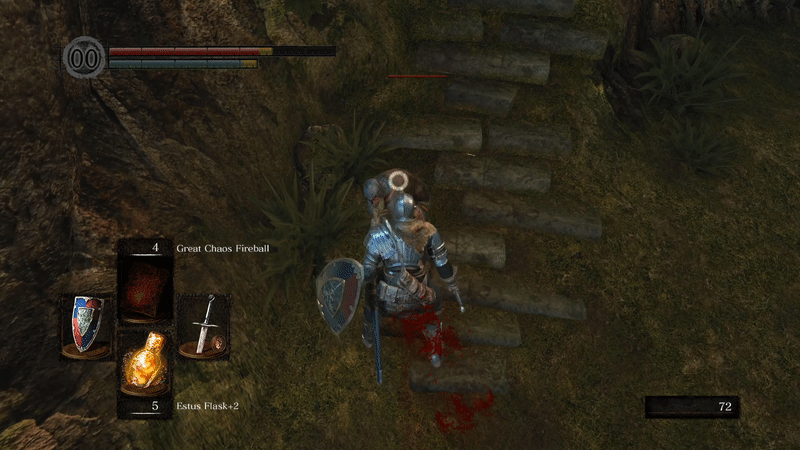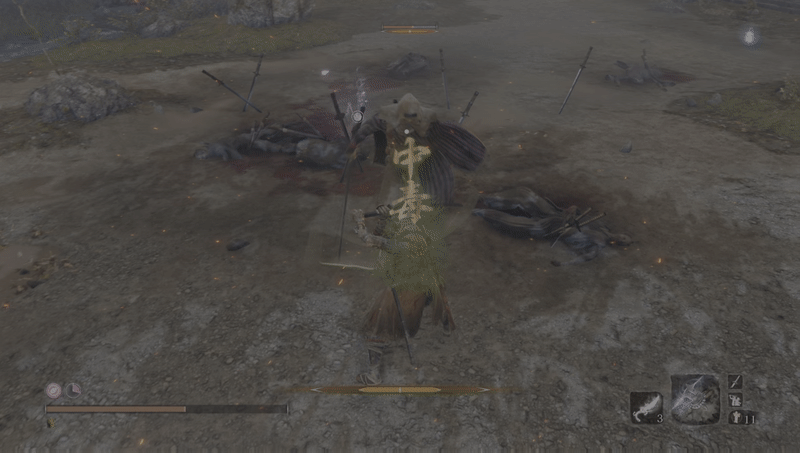You step into a large chapel overgrown with sickly vines and eerily empty, save for one hunch-over figure at the back, nearest the chapel shrine. It stalks toward you like an animal as its boss music kicks in, and you’re introduced to its name: Blood-Starved Beast. The Blood-Starved beast is a mid-game boss in FromSoft’s action RPG Bloodborne. Though technically optional to complete the game, Blood-Starved is centrally located, and gatekeeps one of the game’s major features; the chalice dungeons. It is thus likely to be a boss that most players encounter toward the start of Bloodborne‘s mid-game. This malnourished and emaciated figure fights with the ferocity of a starved predator, and its design backs up this idea while also serving appropriate functions within the overall experience of Bloodborne.
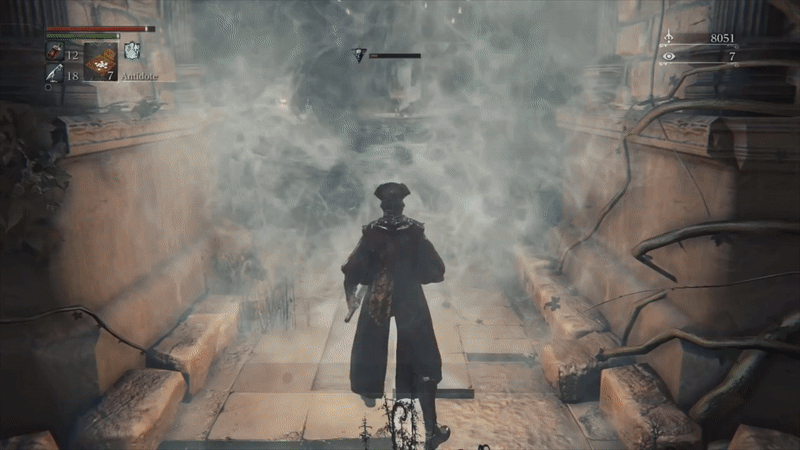
My philosophy when it comes to design, and especially in regards to big set-piece combat encounters like this is to reinforce the overall feel and experience of the game. It’s one of the reasons I so admire FromSoft’s design ethos overal.. Bloodborne, at this point in its story, is a visceral gothic horror about hunting horrible, bloody beasts. It’s gritty, it’s guttural, and it’s dangerous. The blood-starved beast begins to reinforce Bloodborne‘s overall aesthetics and feel from the moment you see its visual design. It’s a hunched-over, somewhat skeletal, feral humanoid figure with large portions of its skin bloodily peeled from its back, and draped over its head like a shawl. It’s a gruesome sight that reflects the environments and tone of Bloodborne. It fights with a hunter’s aggression, homing in on the player with a ravenous intent, keeping the fight high-intensity. The Blood-Starved beast is a quintessential representation of Bloodborne‘s hunt. It’s bloody, it’s animalistic, brutal, and imminently deadly.
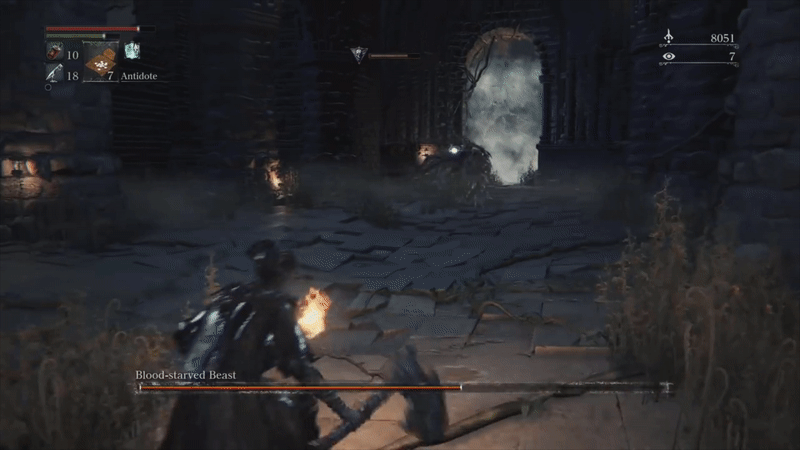
Blood-Starved’s sense of danger is essential to making its fight come together. It needs to feel as though this thing could rip out your throat at any moment, a violent, unstable, rabid animal. This is most embodied in its grab attack, which does a huge amount of damage and can potentially kill a player outright. Highly lethal attacks like this are a favorite of FromSoft’s design to establish the threat of their enemies, and keep them oppressive. The ever-present looming promise of an attack that can potentially outright end the fight in a game over keeps the player on their guard, and shores up the tension. That said, such attacks can feel cheap and unfair if not handled carefully. If an attack is extremely deadly, best practice is keep it predictable and telegraphed, so if the player does fail to avoid it, they don’t feel as though they were blindsided, and the mechanic remains one of skill in the player’s mind, not a random vector of bad luck. The Blood-Starved Beast assumes a very particular posture, it’s normally gyrating and animated movements become still, and focused, it’s arms almost exactly shoulder-width apart in an even stance. This stance really stands out once you know to look for it, rewarding close observation of the boss, which is a standard for FromSoft enemy encounter design, something they are very much always looking to reinforce.
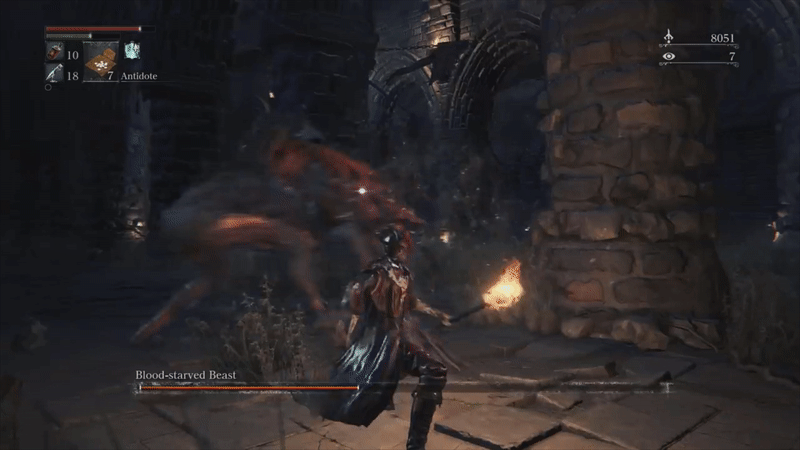
On the more usual and rote side of things, the Blood-Starved Beasts’s primary attacks almost exclusively are aimed in front of it, and they have very little player tracking, meaning just a bit of movement will move the player out of danger. If the player moves too far away, however, the beats will initiate a Dashing attack that covers a lot of ground, to reset the neutral positions of the fight. These patterns, while predictable and simplistic, create the very strong spacial dynamics of the fight.
Blood-Starved’s quick attacks and short response time make it dangerous to approach, and risky to engage in close combat. As an early-to-mid-game boss, Blood-Starved functions to help really cement the player’s skillset and prepare them for the steeper challenges that are to come, and it does so by emphasizing Bloodborne‘s parry mechanic, in which players shoot an oncoming attacker with a firearm just before being hit, stunning the enemy and preparing them for a visceral counter-attack. It’s a powerful option that can carve through enemy health bars quickly, and will remain useful throughout the rest of the game, so Blood-Starved really pushes the player to master this. Its attacks are fast but reactable, wide-reaching but mostly short-ranged, perfect for being parried by the player’s firearm. If the player utilizes the parry and visceral attack, the difficulty of the Blood-Starved Beast can be curbed to a great degree, rewarding mastery of the skill.
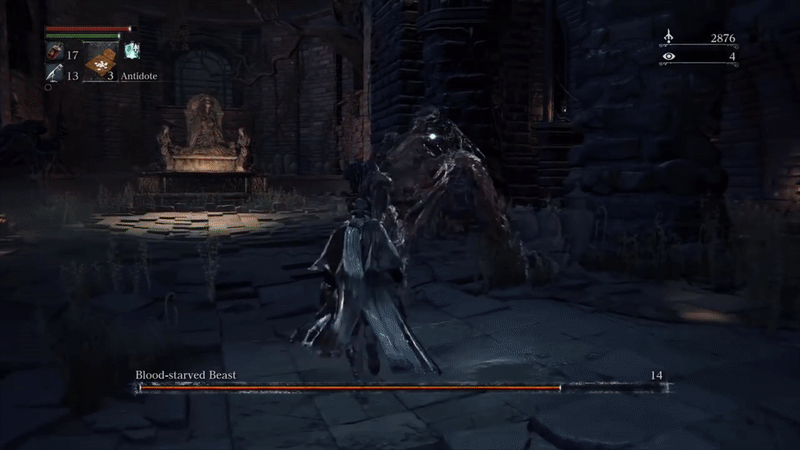
Later on in the fight, The Blood-Starved Beast will start to string a long series of attacks together. With a maneuver like this, the beast is more likely to get some licks in, to give players more opportunity to leverage the health-restoring rally system, which rewards reprising attackers. It also punishes a lack of attention paid. Once the attack begins to hit a player, it is not difficult to disjoint with a dodge so the remaining hits miss, but being caught unaware could mean quickly and drastically losing health. There is one more feature to this attack though, which is that, since it’s a rapid series of strikes it makes parrying it very easy. A lot of times FromSoft will employ rapid attacks like this that seem very intimidating, but realizing how parrying works – that it requires player input to intersect with a certain part of an enemy’s attack animation, means knowing that if you try to parry one of these rapid attacks you are very likely to succeed, as the enemy’s ‘vulnerable’ animation is flashing past over and over again, and it only needs to be snagged by your parry attempt once. As I supposed this boss is meant to greatly reinforce the use of Bloodborne‘s parry, I suspect this is one of the primary reasons for the presence of this attack, a reliable parry opportunity. It’s a powerful attack, but it can be turned against the beast, with an equal and opposite counter.
At the same time, Blood-Starved maintains the standard formula of FromSoft’s boss design through a moveset that reinforces spacing and timing. If the player is unable to master the parry mechanic, Blood-Starved is surmountable through diligent use of spacing. Fast yet telegraphed melee attacks make engaging with it directly from the front infeasible without parrying, so circling around behind can be effective. The boss’s preferred response to this is to create distance between itself and the player, which effectively sets up for it’s leaping grab attack or dashing slash attack, both of which require precise timing to avoid. This makes the boss feel proactive and responsive to the player’s actions, while ensuring player’s are unlikely to escape the battle without seeing their enemy’s most deadly attacks. Circle strafing it is an effective tactic, but not one that carries no risk. In a game that relies so much on its atmosphere, this illusion of a thinking and responsive agent behind enemy AI is essential.
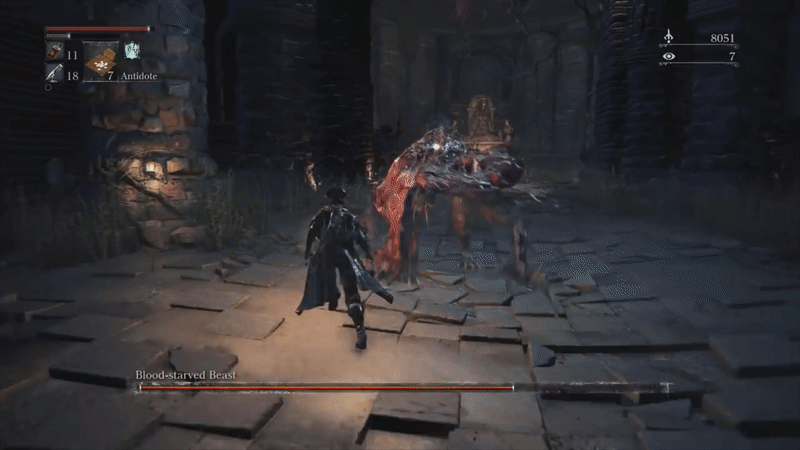
Once The Blood-Starved beast has taken significant enough damage, it will begin the first of two phase transitions, marked by a screeching roar it lets loose. Starting in phase 2, its attacks will now apply poison to the player. The addition of poison to the fight accomplishes two things. One, it ramps up the tension and danger of the encounter. If you’re hit by the beast too many times, even if you’ve got enough healing to recover from the damage, you’ll be poisoned and a constant ticking clock will hang over you. This punishment effectively sets the standard of how often the player should expect to successfully dodge boss attacks without incurring major disadvantages in the future, establishing their expectations accordingly. Secondly, the building of a slow poison encourages a more aggressive playstyle, which is one of Bloodborne‘s chief design goals and hallmarks, which sets it apart from its more slow and calculating predecessors, Dark Souls and Demon’s Souls. Players in high-intensity situations will often try to ‘turtle-up’, so to speak, avoiding direct encounters so-as to preserve their resources and maximize safety. This is somewhat the opposite of Bloodborne‘s strengths as an action game, so FromSoft went to great lengths to reward proactive behavior.
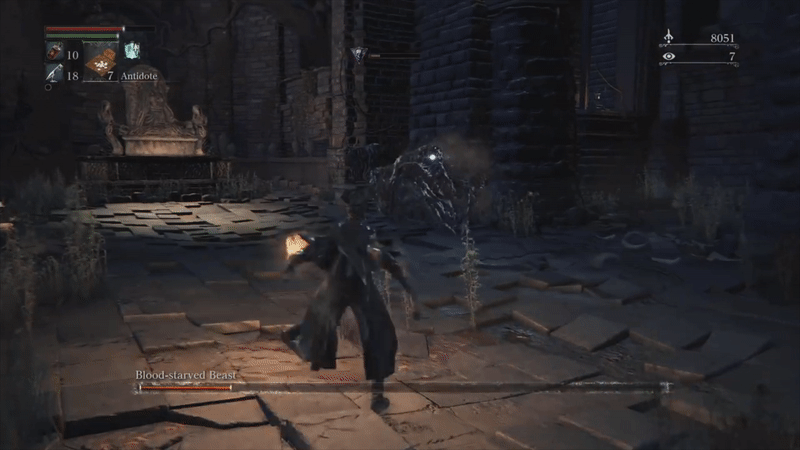
The presence of the poison’s ticking clock communicates that your resources will be depleted if you don’t return a good amount of strikes that the Blood-Starved Beast can dish out to you, complemented by Bloodborne‘s rally system, which restores health if player damage is followed quickly by successful attacks against enemies. Blood-Starved serves as an excellent tool for engendering a more aggressive playstyle that matches the frantic and gritty nature of Bloodborne’s encounters. Phase three sees this pushed further, with clouds of poison now spewing from the beast’s wounds in all directions as it attacks. Spacial awareness becomes even more pivotal, and reliance on just one strategy becomes dicey. Players who can utilize a variety of approaches based on the situation, and do so proactively and aggressively, will find the final phase of the Blood-Starved Beast much smoother.
If a player is too risk-averse or simply not yet up to playing very aggressively, there are alternative solutions to besting the beast for the more strategically-minded. ‘Antidotes’ are plentiful from the carrion crow enemies that dot the level leading up to Blood-Starved Beast, and keeping them handy can put off the pressure from poison, if you find a moment to take one in-between dodging attacks. The pungent blood cocktail, a common item meant to distract the bloodthirsty minor beasts players can encounter, appropriately, works on the Blood-Starved Beast. It will become distracted if one is thrown, and clamor after the small traces of blood within. It’s really refreshing to see that kind of flavorful ingenuity that relies on knowledge of the game’s fiction be rewarded that way. Purely from a gameplay perspective, it might not be obvious that an item like that would work, but from a narrative standpoint it makes perfect sense. Anyway, I always appreciate these little alternate routes to victory in difficult games. Thinking around a problem is as impressive a show of skill as tackling it head on, and players should be encouraged to do so. Reward experimentation.
Blood-Starved is an extremely effective mid-level fight, I think. It’s rather straightforward with its only real gimmick coming in the form of the poison, which as I explained, fits rather well in what the beast’s design utility is. That is, the beast is at home in Bloodborne‘s oppressive atmosphere, with its oppressive combat style, and helps to reinforce a lot of Bloodborne‘s combat fundamentals leading up to the more advanced challenges that await afterward. Players who find themselves able to fight aggressively, and reliably perform parries, counters, and sidesteps, will find themselves well equipped for what comes after. You might say the Blood-Starved Beast is a ‘skill check’ in that way. Designs that focus on both teaching the player abstract technical concepts while engrossing them in the atmosphere of the world is what FromSoft does best in its boss design, and I think the Blood-Starved Beast is pretty emblematic of that.
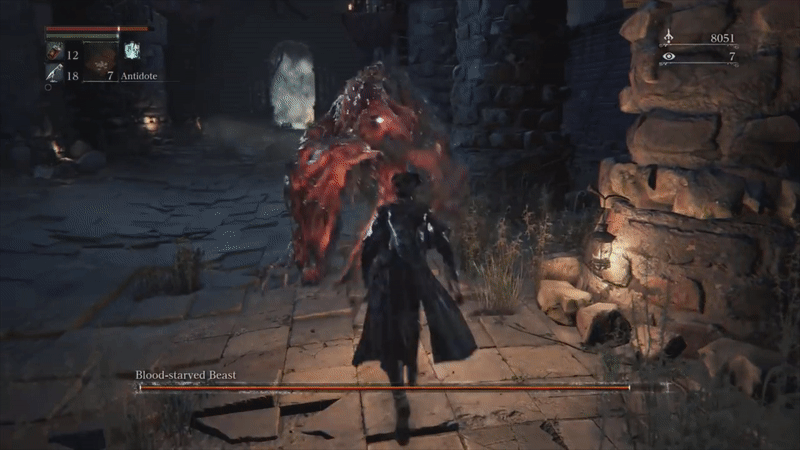
Hunters are killers, nothing less…
